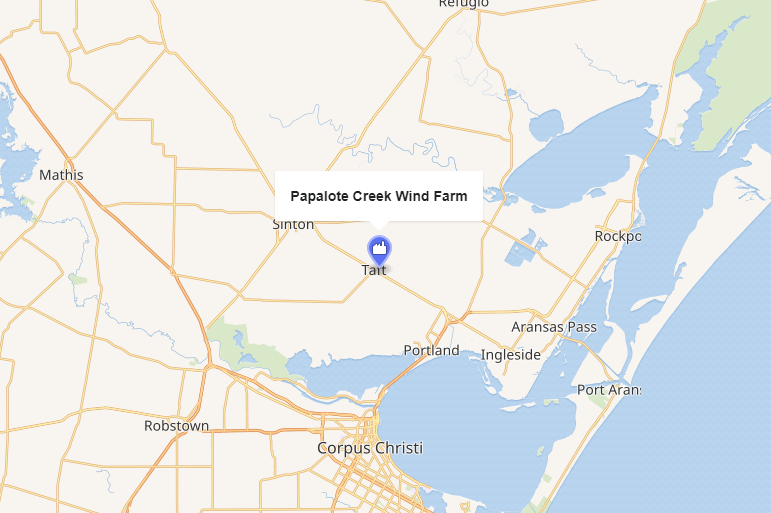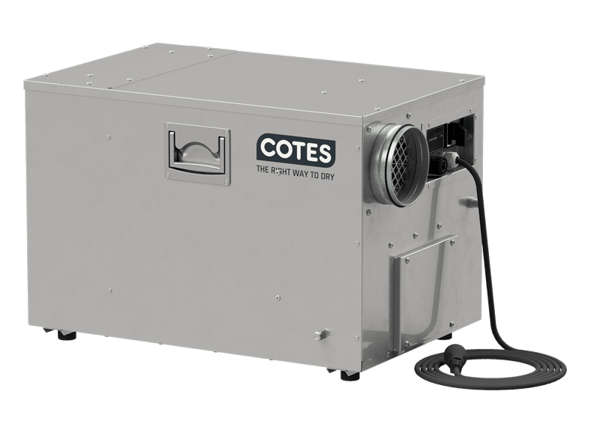RWE's Texas coastal wind farms are well-positioned to supply clean energy to hundreds of thousands of households during peak demand hours in the afternoon. This is due to the wind speed profile along the coast that increases throughout the day and is often at its peak in the late afternoon when demand for electricity is at its highest.
Humidity issues close to the coast - nearshore turbines
However, by being so close to the coast, the wind farms, especially the turbines, must also deal with increased humidity and even corrosion that can affect performance. A common issue with onshore wind turbines under 20km from the coastline.

“High humidity can cause condensation to form and corrosion to build up inside the turbines on components,” said Jeremy Holliday, Operations Site Supervisor at Papalote Creek Wind Facility. “This can lead to increased mechanical and electrical failures resulting in component replacement costs. In our case, high humidity in combination with condensation has been identified as one root cause for high converter component failure rates as well as decreasing lifetime of many different components inside the turbines.”
Fortunately, the RWE operations team at the Papalote Creek wind complex was on the case, searching for a solution to improve performance.
Testing humidity levels
“Our operations team worked closely with engineering to perform a root cause analysis on the failures at the Papalote II Wind Farm,” said Shane Porter, Lead Technician at Papalote Creek II Wind Farm, a 200 megawatt (MW) project, consisting of 87 Siemens 2.3 MW turbines. “After checking humidity levels inside and outside of the delta cabinets, we found humidity levels inside the cabinets was over 70 percent.”
Request a FREE humidity test kit for your wind turbine.
Developing a dry-air strategy
The RWE team initially added more fans and heaters to the cabinets so the condensation would dissipate. Unfortunately, this also meant adding more heat to the cabinet which would not be beneficial to the components considering the daily South Texas temperatures.
“I remembered that Siemens 2.3 MW offshore turbines, which experience similar environmental challenges, are equipped with a tower dehumidifying system to reduce the humidity level,” said Shane.
The right way to dry a wind turbine
Doing some quick research, the team found a supplier, Cotes, who had provided the dehumidifiers to Siemens. Cotes manufactures adsorption dehumidifiers that remove moisture (and salt) from the air inside wind turbines to protect them against mould, corrosion, and electrical faults caused by excessive levels of humidity (and salt, depending on climatic conditions).
“We reached out to Cotes to start designing the Papalote converter cabinet dehumidifier,” said Shane. “After about three different meetings, we were able to work out the details and come up with a process and then submitted the plans to engineering for approval.”
 Image above: The CR400B is a popular and efficient retrofit dry-air solution and was the right dry-air solution for the Papolote Creek wind farm.
Image above: The CR400B is a popular and efficient retrofit dry-air solution and was the right dry-air solution for the Papolote Creek wind farm.
One dehumidifier unit has been installed to date, and the team is encouraged with the results where they have been able to reduce the humidity levels by 38 per cent in the turbine selected for testing.
“Based on what we are seeing so far, we expect the dehumidifiers to extend the life span of installed delta modules and reduce failures going forward,” said Shane. “We have seen fewer repairs and increased production in the test turbine.”
The results at Papalote Creek have been so positive that Cotes is rolling out this same set-up at other Siemens sites creating a larger impact for many sites in high humidity areas.
Dehumidifier fast facts:
- Average humidity was reduced by 38% with a dehumidifier
- Max humidity events above specification limits of 60% in cabinets are reduced by a factor of 1,500 with a dehumidifier
- Risk to components by mould, condensation, corrosion and mechanical damage is eliminated with a humidifier
- Component lifetime increased by 5-7 years with a dehumidifier installed
- One Delta Module pays for five dehumidifier systems
Want to test the humidity levels in your wind turbine?
